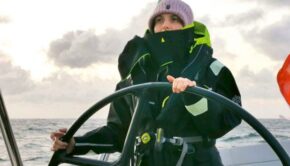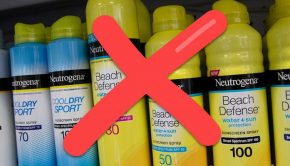SUNSCREEN: New rules applied to labeling
Published on April 16th, 2013
Chances are you haven’t purchased sunscreen since you put away your bikini and beach towel last September. You’ll notice a few changes on your favorite sunscreen bottle since then.
In December, the Food and Drug Administration revised and updated sunscreen labeling, promising to make it easier for consumers to make the right sunscreen choice.
Since diligent use of sunscreen is the first step in preventing sun damage to the skin, here’s what to look for on sunscreen labels now:
SPF value better defined
The new labeling now tells consumers on the back of the product that sunscreens labeled as SPF 15 (or higher) and “broad spectrum” (see below) not only protect against sunburn, but, if used as directed with other sun protection measures, can reduce the risk of skin cancer and early skin aging.
Any sunscreen that has an SPF value between 2 and 14 now must carry a warning that reads: “Skin Cancer/Skin Aging Alert: Spending time in the sun increases your risk of skin cancer and early skin aging. This product has been shown only to help prevent sunburn, not skin cancer or early skin aging.”
No more super SPFs
Sunscreen products that have SPF values higher than 50 must now be labeled as “SPF 50+.”
According to the FDA, SPF 15 blocks about 93 percent of harmful rays. Any product with an SPF value of 50 or above adds little additional protection, it says.
Broad spectrum
Under the new regulations, sunscreen products that protect against all types of sun-induced skin damage are labeled “broad spectrum” on the front of the package.
The FDA has established a standard test for over-the-counter sunscreen products that determines which ones are allowed to be labeled as “broad spectrum.” Products that pass this test will provide protection against both ultraviolet B radiation (UVB) and ultraviolet A radiation (UVA). Sunburn is primarily caused by UVB. Both UVB and UVA can cause sunburn, skin cancer and premature skin aging. A certain percentage of a broad spectrum product’s total protection must be against UVA.
By contrast, any sunscreen not labeled as “broad spectrum” must state on the label that the product has only been shown to help prevent sunburn, not skin cancer.
Water resistance claims
Manufacturers cannot make claims that sunscreens are “waterproof” or “sweatproof.” Instead, they may label products as “water resistant” but must say how much time a user can expect to get the declared SPF level of protection while swimming or sweating. Based on standard testing, two times are permitted on labels: 40 minutes or 80 minutes.
No immediate protection
Sunscreens cannot claim protection immediately on application (for example, “instant protection”) or protection for more than two hours without reapplication, unless they submit data and get approval from FDA.
No more sun blocks
Since no sunscreen product completely blocks all UV rays, manufacturers cannot use the term “sun block.”
Source: Union Tribune








 We’ll keep your information safe.
We’ll keep your information safe.